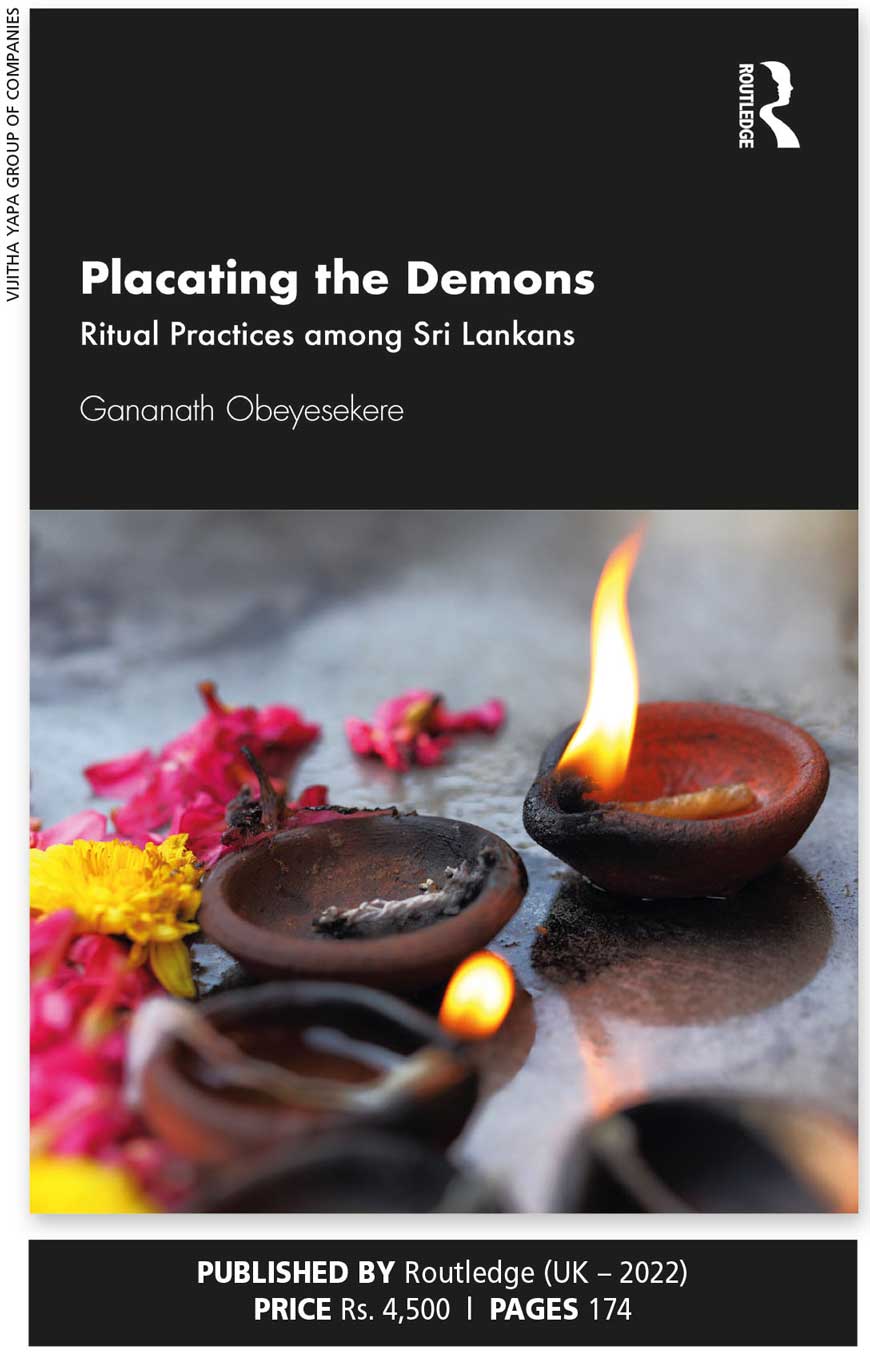BOOKRACK
By Vijitha Yapa
 Rituals, voodoo, black magic and witchcraft have always fascinated people all over the world. Tales of witches being burnt at the stake and the gory end of the heroine in the famous story of Joan of Arc are well known.
Rituals, voodoo, black magic and witchcraft have always fascinated people all over the world. Tales of witches being burnt at the stake and the gory end of the heroine in the famous story of Joan of Arc are well known.
In the Hundred Years’ War between England and France, an illiterate 17-year-old farm girl (Jeanne d’Arc) who claimed she was obeying the voices of three dead saints was allowed to lead the desperate French army in 1429.
Jeanne (or Joan) succeeded and the Dauphin was crowned King of France. But she was captured and condemned as a relapsed heretic for wearing men’s clothes, and burnt at the stake in 1431.
Belief in sorcery and black magic persists in Sri Lanka. Prof. Gananath Obeyesekere has collated various types of rituals associated with sorcery, demons and exorcism, compiling all of it in one book. Although it’s uncommon in urban areas, bali thovil ceremonies are performed in villages across the country.
A plea for Lord Buddha’s help to exorcise demons is an integral part of these ceremonies to banish spirits that have possessed their victims. Rituals performed for the sanni yaka is the first subject that Obeyesekere tackles.
The sanni yaka is also called kola sanniya. A pantheistic deity who incorporates 18 other yakas (demons) is collectively known as daha ata sanniya.
Rituals are often quite dramatic. Demons appear on stage with masks on, and there is a comic dialogue exchanged while obscenities are uttered. At the ceremony’s end, the demon that had possessed the victim is told he must accept what is offered by the order of Lord Buddha and power of the gods, and leave after rescinding any curses invoked.
In addition to humans being possessed, demons and gods may also be responsible for causing diseases and illnesses, and even natural disasters such as droughts, floods and famine.
If Ayurveda doesn’t heal the victim, the family may turn to ritual curing in the belief that it’s caused by a demonic agency. Such possession is thought to arise when demons cast their eyes on potential victims. The eyes form an integral part of this belief – as is to be seen when a statue of Lord Buddha is built and the ‘eye laying ritual’ is conducted only at the last moment.
Possession by devils is believed to take place at times propitious to demons – daybreak, noon, evening and midnight. They’re said to be attracted by fried foods, meat, blood, nudity or exposed genitals.
Obeyesekere goes into detail on various rituals; and that’s helpful because very often, one hears chanting at these ceremonies but may be confused as to what’s happening.
A very important part of the ritual is when a shaman lies on a mat and invites the demon (Riri Yaka) to consume the food that’s placed on his chest; and later, consume the human too – albeit in spirit form.
At the ritual’s end, the mat is folded around the officiant, who’s carried away with weeping and waving, and placed near a bush that’s supposed to represent a cemetery. The concept is that the shaman or kapu rala is offering a life for a life.
The author has also taken the trouble to provide details of what’s being chanted during the ceremony and this has been translated into English.
“In ritual, the enactment of the past serves in a sense to recreate it and make the past relevant for the present,” he says. This is because of the history of the ritual and its connection to Lord Buddha whereby he’s said to be the power of good over evil.
These rituals were powerful historically: in addition to the king’s authority, injustices led complainants to seek the power of sundry deities to ensure justice for the victims.
Today, one sometimes sees villagers dashing coconuts, burning prominent politicians in effigy and invoking curses – with little effect! But these actions illustrate how even semiliterate people would wish perpetrators of crimes or injustices to be punished.
Ironically, those against whom court cases are filed go scot free nowadays…
Sir John D’Oyly, 1st Baronet of Kandy, wrote in detail about four types of divi or oaths among the Sinhalese and a characteristic feature of trial by both parties – where the gods act as witnesses to the deed and divine arbiters of justice. The casting of huniyam and kodivina (evil spells) are also given in detail together with the rituals of neutralising the same.
The most interesting sections of this book are confined to its back pages where Obeyesekere details his interpretations of the rituals using actual cases. This publication will help both scholars and laypeople understand important aspects and beliefs of the Sinhalese people.



